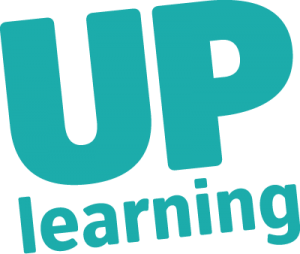“Steering learners in self-guided learning”
That was the heading of a report posted on rendement.nl a short time ago.
That headline quickly raised the question of whether self-guidance itself is not undermined by too much conscious steering of learners. Or is there an alternative where organisations can merely set preconditions for self-guided learning and not deliberately steering learners?
What does self-guided learning deliver for employees and the organisation?
Laura Overton from the independent organisation ‘Towards Maturity’ is very firm and concrete about the power of self-guided learning. Her ongoing benchmarking of more than 600 L&D professionals shows that organisations with strong capabilities in self-guidance are able to:
| 9% | 12% | 16% | 24% |
|---|---|---|---|
| generate more sales | be more productive | have higher employee engagement | implement systems faster |
Curious as I am, I took the time to fill in the benchmark questionnaire myself. Firstly, I wanted to experience what self-guided UP learning was all about. I was also keen to discover how ‘Towards Maturity’ determines how to generate 9% more revenue and, of course, how well UP learning itself has embedded learning processes and technology, expressed as a TM Index score. The questionnaire was very comprehensive and made a high-quality impression. I can recommend this exercise to any L&D professional. It forces you to reflect on the processes and measures that influence your ability to self-guide. (See: http://mybenchmark.towardsmaturity.org/index.php).
How did UP perform?

With a score of no less than 70.88, we are well above the TM benchmark. Of course, as a proud foreman, I certainly didn’t downplay the capabilities of our company when answering, but I didn’t exaggerate either. I think that this result shows that we as a team have recently made important steps forward as a result of:
- Making strategic and business objectives more explicit and including them in periodic all-hands sessions. This allows everyone to better understand what is expected of them.
- The introduction of new core values combined with a different remuneration structure. Core value cooperation has proven to be essential for us in this respect.
- Intensifying employee-generated content by using our video platform. The starting point is that all knowledge can be shared internally by video. We share product knowledge and success stories there on a daily basis. Every week a couple of us take turns presenting a “look at the week” and, externally, we share numerous use cases with our clients and prospective clients.
In terms of the organisation of learning itself, we have only really worked explicitly on the third point. The first two issues are related to strategy, communication and culture. So you could say that we have been more of a facilitator than a director in improving self-guided learning at UP.
How to measure the self-guidance capacity of your organisation
In partnership with the University of Twente, UP has developed a method to measure the capacity of your organisation for self-guidance and goes a step further than the TM benchmark by involving employees themselves: the self-guided learning scan.





